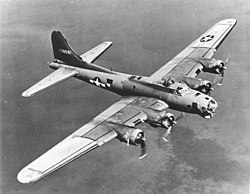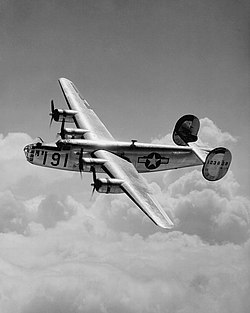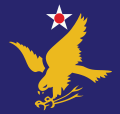966th Airborne Air Control Squadron  | |
|---|---|
 552d Air Control Wing Boeing E-3 Sentry | |
| Active | 1942–1944; 1944–1945; 1961–1969; 1976–present |
| Country | |
| Branch | |
| Role | Airborne command and control training |
| Size | 180 personnel |
| Part of | Air Combat Command |
| Garrison/HQ | Tinker Air Force Base |
| Motto(s) | Protection by Professionals (1963-1989) |
| Engagements | China-Burma-India Theater |
| Decorations | Air Force Outstanding Unit Award with Combat "V" Device Air Force Meritorious Unit Award Air Force Outstanding Unit Award Republic of Vietnam Gallantry Cross with Palm |
| Commanders | |
| Current commander | Lt Col Asif Kausar |
| Insignia | |
| 966th Airborne Air Control Squadron emblem [a] [1] [2] |  |
| 966th Airborne Early Warning & Control Squadron emblem [b] [1] |  |
The 966th Airborne Air Control Squadron is an active United States Air Force unit assigned to the 552d Air Control Wing at Tinker Air Force Base, Oklahoma. It operates the Boeing E-3 Sentry Airborne Warning and Control System aircraft conducting training of crews in airborne command and control missions.
Contents
- Mission
- Organization
- History
- World War II
- Airborne warning and control
- Lineage
- Assignments
- Stations
- Aircraft
- Awards and campaigns
- See also
- References
- Notes
- Bibliography
The squadron's first predecessor is the 466th Bombardment Squadron which served during World War II as an Operational Training Unit, and later as a Replacement Training Unit. It was inactivated in the spring of 1944 in a general reorganization of Army Air Forces support and training units in the United States.
The second predecessor of the squadron was organized in India as the 166th Liaison Squadron. It provided light transport, observation, and aeromedical evacuation support for Allied forces fighting in Burma. Following V-J Day, it returned to the United States for inactivation.
The 966th Airborne Early Warning and Control Squadron was organized in 1962 to provide seaward radar coverage in the Gulf of Mexico and Caribbean Sea. It also supported Lockheed U-2 Dragon Lady missions over Cuba and NASA rocket recovery. After 1965, it deployed aircrews to Viet Nam and Thailand to provide radar coverage over North Viet Nam. The squadron was inactivated at the end of 1969.











